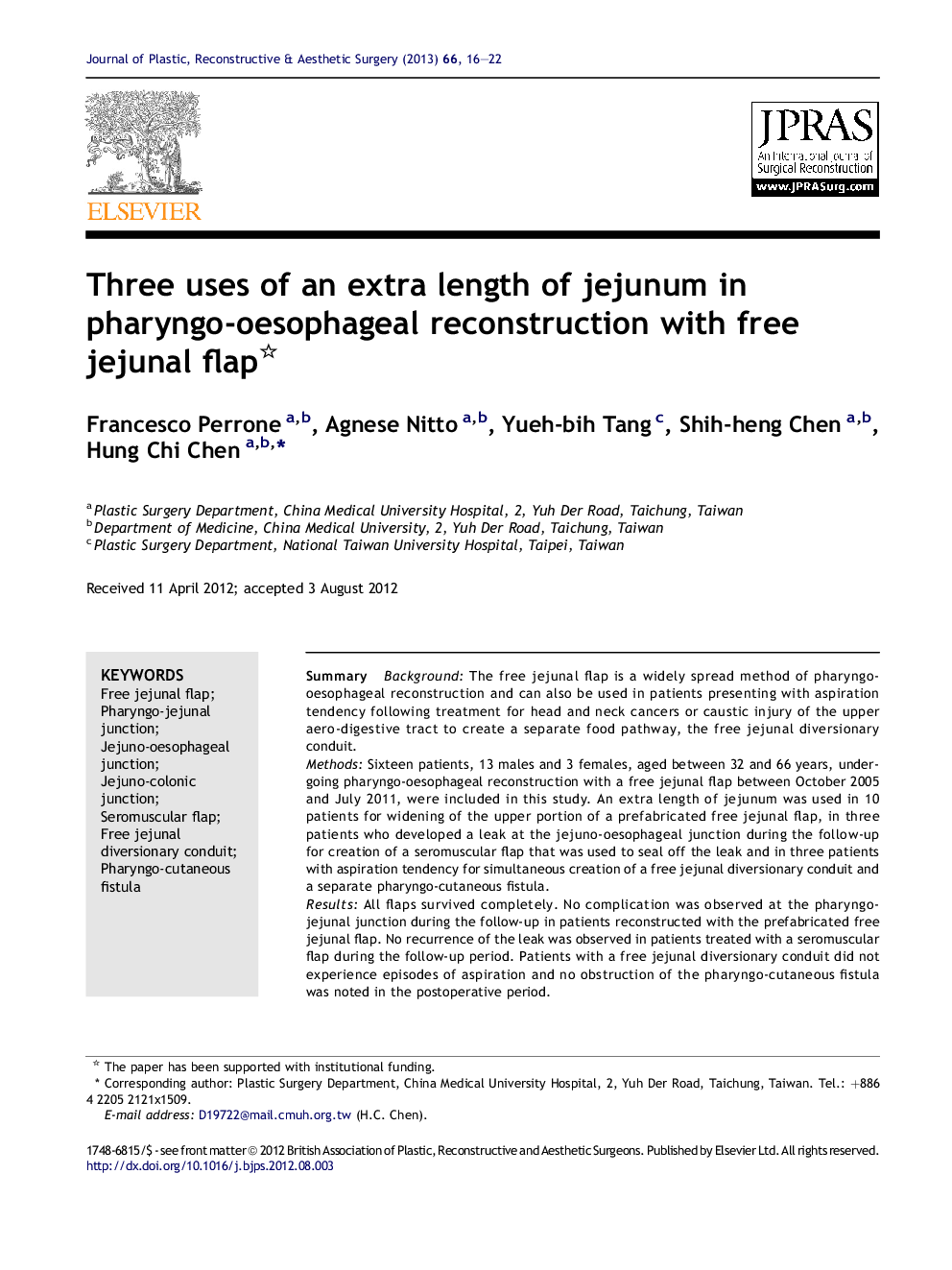| کد مقاله | کد نشریه | سال انتشار | مقاله انگلیسی | نسخه تمام متن |
|---|---|---|---|---|
| 4118836 | 1270341 | 2013 | 7 صفحه PDF | دانلود رایگان |

SummaryBackgroundThe free jejunal flap is a widely spread method of pharyngo-oesophageal reconstruction and can also be used in patients presenting with aspiration tendency following treatment for head and neck cancers or caustic injury of the upper aero-digestive tract to create a separate food pathway, the free jejunal diversionary conduit.MethodsSixteen patients, 13 males and 3 females, aged between 32 and 66 years, undergoing pharyngo-oesophageal reconstruction with a free jejunal flap between October 2005 and July 2011, were included in this study. An extra length of jejunum was used in 10 patients for widening of the upper portion of a prefabricated free jejunal flap, in three patients who developed a leak at the jejuno-oesophageal junction during the follow-up for creation of a seromuscular flap that was used to seal off the leak and in three patients with aspiration tendency for simultaneous creation of a free jejunal diversionary conduit and a separate pharyngo-cutaneous fistula.ResultsAll flaps survived completely. No complication was observed at the pharyngo-jejunal junction during the follow-up in patients reconstructed with the prefabricated free jejunal flap. No recurrence of the leak was observed in patients treated with a seromuscular flap during the follow-up period. Patients with a free jejunal diversionary conduit did not experience episodes of aspiration and no obstruction of the pharyngo-cutaneous fistula was noted in the postoperative period.ConclusionsWe want to encourage the use of an extra length of jejunum in pharyngo-oesophageal reconstruction with a free jejunal flap because it helps to manage postoperative complications, such as leakage and stricture, and it does not increase the morbidity related to the reconstruction. Furthermore, we believe that the creation of a separate pharyngo-cutaneous fistula represents another step forward in the improvement of pharyngo-oesophageal reconstruction with a free jejunal diversionary conduit.
Journal: Journal of Plastic, Reconstructive & Aesthetic Surgery - Volume 66, Issue 1, January 2013, Pages 16–22